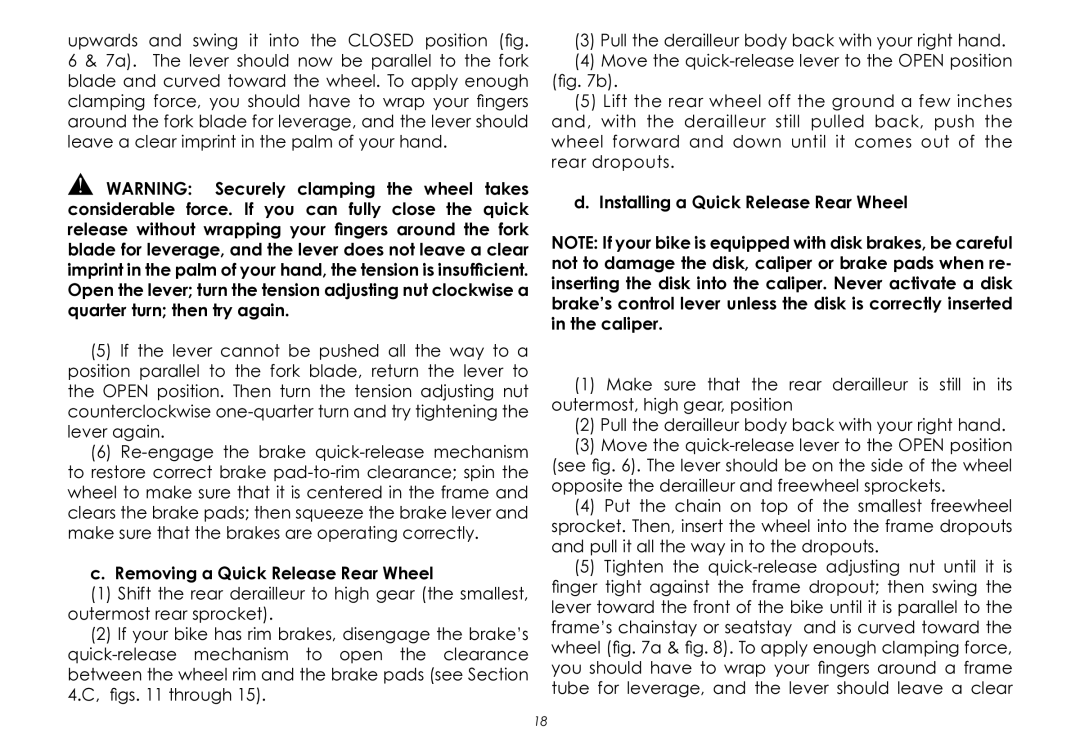upwards and swing it into the CLOSED position (fig. 6 & 7a). The lever should now be parallel to the fork blade and curved toward the wheel. To apply enough clamping force, you should have to wrap your fingers around the fork blade for leverage, and the lever should leave a clear imprint in the palm of your hand.
!WARNING: Securely clamping the wheel takes considerable force. If you can fully close the quick release without wrapping your fingers around the fork blade for leverage, and the lever does not leave a clear imprint in the palm of your hand, the tension is insufficient. Open the lever; turn the tension adjusting nut clockwise a quarter turn; then try again.
(5)If the lever cannot be pushed all the way to a position parallel to the fork blade, return the lever to the OPEN position. Then turn the tension adjusting nut counterclockwise
(6)
c. Removing a Quick Release Rear Wheel
(1)Shift the rear derailleur to high gear (the smallest, outermost rear sprocket).
(2)If your bike has rim brakes, disengage the brake’s
4.C, figs. 11 through 15).
(3)Pull the derailleur body back with your right hand.
(4)Move the
(fig. 7b).
(5)Lift the rear wheel off the ground a few inches and, with the derailleur still pulled back, push the wheel forward and down until it comes out of the rear dropouts.
d. Installing a Quick Release Rear Wheel
NOTE: If your bike is equipped with disk brakes, be careful not to damage the disk, caliper or brake pads when re- inserting the disk into the caliper. Never activate a disk brake’s control lever unless the disk is correctly inserted in the caliper.
(1)Make sure that the rear derailleur is still in its outermost, high gear, position
(2)Pull the derailleur body back with your right hand.
(3)Move the
(see fig. 6). The lever should be on the side of the wheel opposite the derailleur and freewheel sprockets.
(4)Put the chain on top of the smallest freewheel sprocket. Then, insert the wheel into the frame dropouts and pull it all the way in to the dropouts.
(5)Tighten the
18
